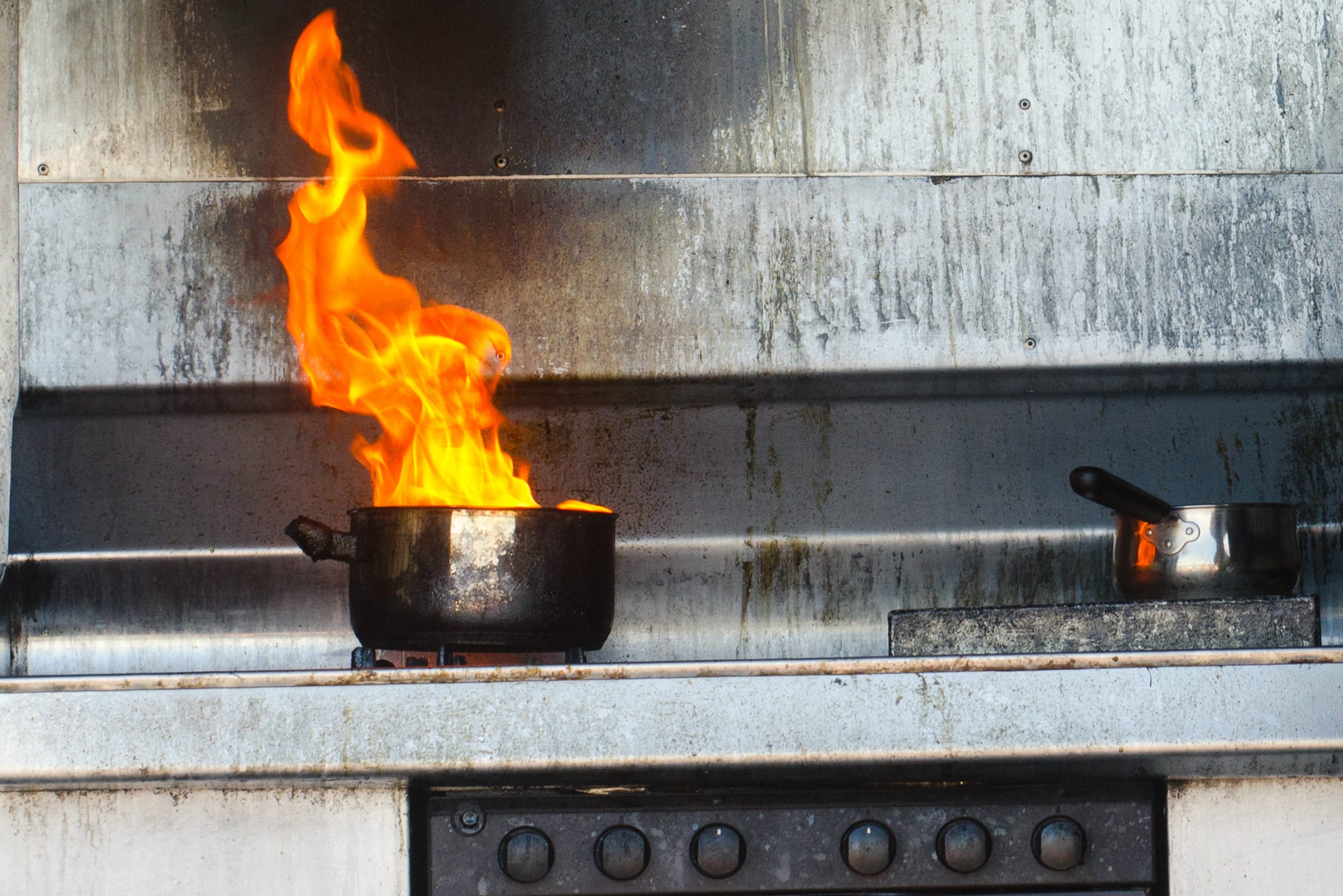
Choosing the right fire suppression system is critical for protecting lives, property, and business assets. This guide explores the strengths, uses, and limitations of CO₂, dry chemical, foam, and water-based systems, helping you make informed decisions for your specific needs.
Why Choosing the Right Fire Suppression System Matters
Each fire presents unique challenges depending on the materials involved, the layout of the space, and how quickly the risk can escalate. Not all fires can be controlled with water, and some environments demand solutions that minimize cleanup or prevent damage to sensitive equipment.
By knowing how CO₂, dry chemical, foam, and water-based systems work, you gain the power to protect people and investments without guessing or taking unnecessary risks.
CO₂ Fire Suppression Systems
CO₂ (carbon dioxide) fire suppression systems eliminate fires by rapidly reducing the concentration of oxygen in the protected area. They’re commonly stored as liquid CO₂ under pressure and then released as a gas to flood the affected space.
Strengths and Best Uses
- Excellent for protecting electrical equipment, server rooms, and industrial machines
- Leaves no residue, so there’s minimal cleanup
- Non-conductive, making it safe for most electrical hazards
- Acts quickly, extinguishing fires before they spread
Limitations
- Not safe for occupied spaces; high concentrations of CO₂ can be harmful to humans
- Regular maintenance is needed to ensure safety mechanisms are functional
- Not effective against fires involving oxidizing agents, reactive metals, or deep-seated Class A combustibles (like paper or textiles)
CO₂ systems are a leading choice for areas where equipment costs outweigh concerns about temporary inaccessibility and where quick action is essential.
Dry Chemical Fire Suppression Systems
Dry chemical systems rely on finely powdered chemicals (commonly monoammonium phosphate or sodium bicarbonate) to interrupt the chemical reaction driving the fire.
Strengths and Best Uses
- Effective against Class A (ordinary combustibles), Class B (flammable liquids), and Class C (electrical) fires
- Rapidly suppresses flames, often stopping spread in seconds
- Flexible enough for use in industrial kitchens, chemical plants, manufacturing floors, fuel storage, and heavy vehicles
Limitations
- Powder dispersal can cause visibility challenges and create a mess that must be fully cleaned before reusing equipment
- Powder may corrode sensitive electronics or machinery if not cleaned properly
- Not suited for areas where minimal residue is required (like clean rooms or IT environments)
These systems shine where versatility is key and where a little post-incident cleaning beats the losses associated with unchecked fire damage.
Foam Fire Suppression Systems
Foam systems work by delivering a thick blanket of foam onto the fire, cutting off oxygen and suppressing dangerous vapors. Often paired with a decorative fire extinguisher for added style and functionality, these systems most commonly employ aqueous film-forming foams (AFFFs) for flammable liquid fires.
Strengths and Best Uses
- Outstanding for tackling Class B fires involving flammable liquids like petroleum, solvents, and alcohol
- Prevents re-ignition by sealing evaporating fuel surfaces
- Commonly used in aviation hangars, fuel farms, refineries, and large chemical storage areas
Limitations
- Not ideal for electrical fires or areas with sensitive electronics
- Cleanup can be more labor-intensive compared to some alternatives
- Requires adequate drainage and containment for runoff water and foam
Foam is the gold standard when hazardous liquids are present, particularly in settings where ignition sources can’t always be predicted or prevented.
Water-Based Fire Suppression Systems
Water remains the most familiar firefighting tool, whether via traditional sprinklers, misting systems, or high-pressure hoses. Water-based suppression works by absorbing heat, cooling burning materials, and cutting off a fire’s fuel source.
Strengths and Best Uses
- Highly effective against Class A fires (wood, paper, textiles, general combustibles)
- Reliable, widespread, and relatively inexpensive to install and maintain
- Can be engineered as low-, medium-, or high-pressure systems based on risk profile
Limitations
- Not safe for electrical fires or areas containing water-reactive substances
- Can cause significant water damage, affecting documents, electronics, and building fabric
- Unsuitable for hazardous liquid fires, as they may spread the burning material instead of extinguishing it
Water-based suppression is a tried-and-true solution, especially in public buildings, offices, hotels, and places where human safety is the primary concern.
How to Choose the Right Fire Suppression System
Selecting the best fire suppression system comes down to a few key considerations:
- Nature of the Assets at Risk
Are you protecting electronics, chemicals, combustible solids, or flammable liquids?
- Presence of People
Can the area be evacuated quickly, or do you need a system that’s safe for occupied spaces?
- Tolerance for Cleanup or Downtime
Do you need a clean, fast reset post-incident, or can you manage some disruption for the sake of thorough suppression?
- Regulations and Building Codes
Always consult local laws, insurance requirements, and industry standards before making a final decision.
Conclusion
Different fire suppression systems suit specific needs: CO₂ for technical areas, dry chemical for versatile fire control, foam for hazardous liquids, and water-based systems for general risks. Choosing the right system ensures optimal protection for your facility and assets. Consult fire safety professionals to find the best solution and stay prepared.